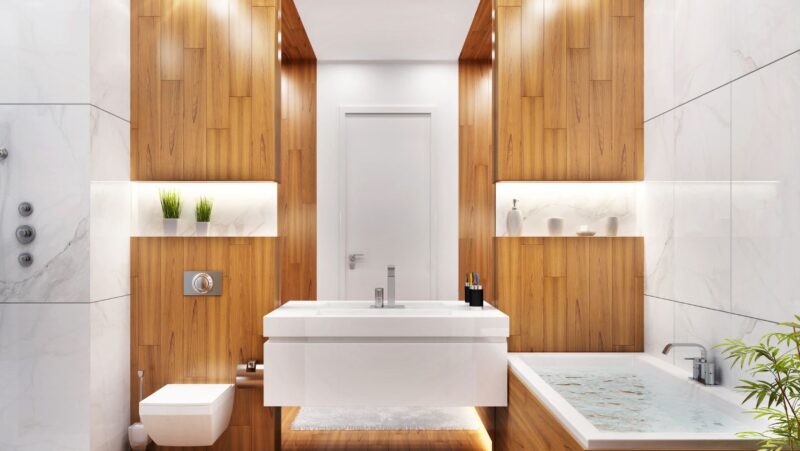
One way to bring some life and freshness into any design is to incorporate some greenery. While there are so many beautiful leafy greens you could bring indoors to accentuate your designs. You know that you need to be mindful of the type of plants you choose to decorate with, but you also need to know how to best style the room so they will accentuate your designs.
Here, we’ve got some helpful tips waiting for you to utilise in your best style in your spaces using plants. We even show you some of the best plants to use to complement your designs.
Consider Your Chosen Style
Whether your goal is to bring a bit of the lush and exotic feeling of the jungle or capture the simplicity that succulents offer, your first order of business is to decide on the vibe of your space. Consider the colors, furniture, lighting, and other decor, and this will help guide you toward the particular atmosphere you want to cultivate with your plants.
Draw inspiration from previous experiences where the plants have caught your attention. Visualise the plants you’ve seen, whether it was a restaurant that utilised their space and foliage well or a botanical garden.
Don’t underestimate the power that plant accessories play in design. Planters have the potential to bring about cohesiveness between the plants and the rest of the room. Incorporating wood is always a winner when bringing plants into the equation, as it adds that warmth and texture needed.
For example, For those trying to create a dreamy atmosphere, hanging plants like the English Ivy (Hedera helix) are a welcoming perennial with non-distracting leaves that blend well and can be paired with other shade-loving plants.
Consider Your Colour Scheme
You’d be surprised how easily your colour palette and plants can contradict the style that you are trying to achieve and can sometimes clash when not thought out. Before you’re set on your color and plant choice, step back and consider if your choices are harmonizing with one another. This is key in helping you choose what plants to incorporate.
For example: In a space with a dark color scheme, plants that will complement and not distract from the style and color will be your ones with darker foliage. Consider plants like the Calathea or ZZ Plant.
Consider Your Space
It’s all about balance, and when incorporating plants into your designs, to do it well, you need to ensure they’re proportional to the space you’ve got to work with. Understanding that your plants are animate features and will grow over time means you need to consider their growing patterns and how this will impact the room.

Here are three crowd-pleasing layouts for keeping plant type and placement proportional:
- Irregularity uses odd numbers of plants to create interest and charisma
- Symmetry is generally appealing to the eye and is achieved by using an even number of plants
- Groupings can be focused on certain areas and characteristics
Consider Your Light Levels
When working with plants as a design element, you may think we’re just referring to natural lighting, but artificial lighting can also be used as a substitute to a certain degree. Your indoor plants will need light to remain healthy, so consider how much natural lighting you have to work with because this will help you gauge what types of plants will thrive in the environment. The same goes for your climate, as different plants will require different conditions.
Thankfully, there are a few typical light conditions that would apply to your different interior spaces. Here are some light levels you need to be aware of:
- Direct sunlight
- Filtered or indirect bright light
- Low to medium light
- Artificial light
For example, in rooms that experience light that floods into the room, and the plants are exposed to direct sunlight and hot conditions, plants like cacti will be better adapted than tropical species.
For rooms that lack natural light, strategically placed mirrors can help cast natural light across the room. Hanging mirrors across from or beside a window will create an effect where light will bounce across the room.
Consider Your Focal Points
There will always be places in the room that capture your attention as soon as you walk in; this is called the focal point and is a vital component in design. For those wanting to use plants in their focal points, stand at the entrance and take note of what stands out to you first. It’s possible for rooms to have multiple focal points, and it’s possible to create them using your plants.
For example: A dull corner is the perfect place to put a large, eye-catching plant like a Lady Palm or of course the infamous Fiddle-leaf Fig.
Consider Plant Care And Your Lifestyle
Most people see their plants begin to thrive in an environment the moment they realize it’s not just a part of the decor, but they are living things. To ensure your best attention to your plant’s needs, you need to be stocked up on high-quality landscaping supplies.
When you’re looking for plants, ensure you also check their care needs and consider whether you have the capacity to upkeep that plant. For those with a packed day-to-day schedule, incorporate plants that don’t require too much maintenance.
Anyone with pets will need to be wary of certain plants because your curious little critters have a tendency to chew on plants, which may be toxic. So, avoid the pet bills and opt for more pet-friendly plants, Spider Plant or the Chinese Money Plant.
Final Thoughts
Have fun and experiment when adding plants to your designs, but as we mentioned, for interior design to work, you need to always consider balance. So, take all these considerations and find the best way to bring your spaces to life using plants.




